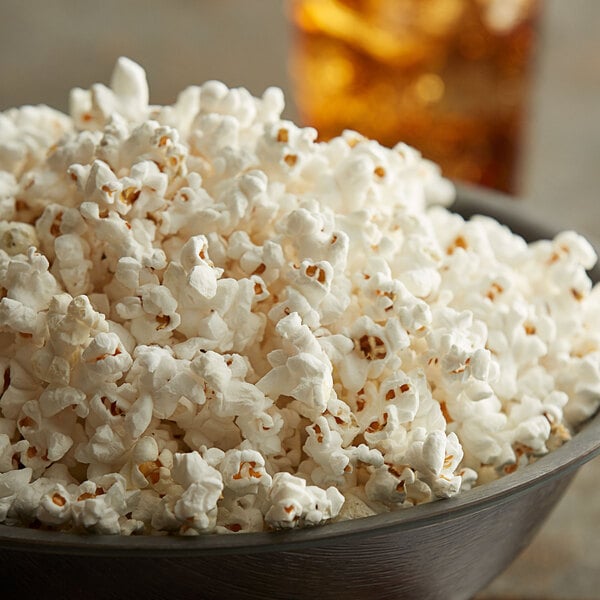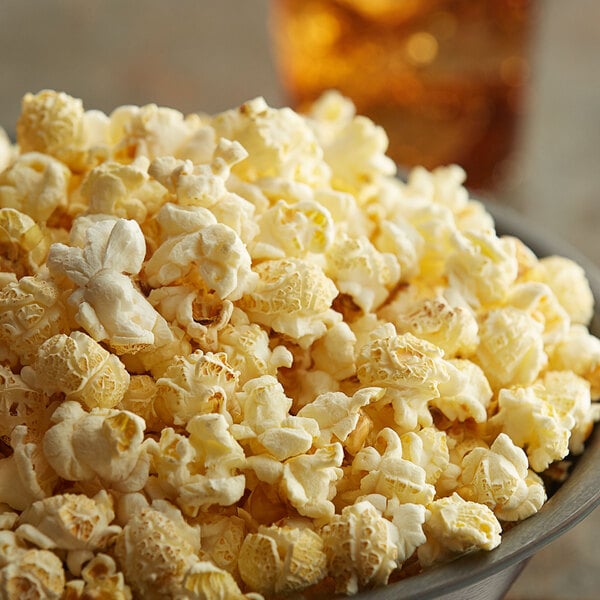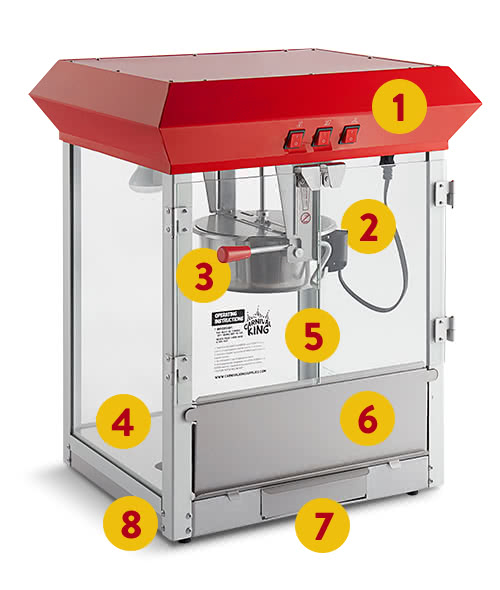Things you should know before you start making your own popcorn
Popcorn might be one of the most popular snacks in the world. Who
doesn't love a good movie accompanied by a bowl of crunchy heaven? Sweet
or salty, it will add a special spark to your event.
Have you ever noticed that when you throw a bag of popcorn into the
microwave, it's never as good as the one they sell at movie theaters and
amusement parks? The secret is in the process of making it. If you
really want to step up your popcorn game, you might consider purchasing
a popcorn machine. Find the best popcorn machine for you
here.
However, the machine isn't everything. Let's have a look at a few basic
popcorn facts to get started.
Types of popcorn kernels

Butterfly / Snowflake Popcorn:
🍿Irregular shapes with light, fragile "wings" protruding from all
sides.
🍿More tender, light, and fluffy than mushroom kernels. It's best served
fresh for maximum crunch!
🍿Most often used in movie theaters, stadiums, and carnivals.
🍿Non-uniform shape allows you to fill serving sizes with less product
to maximize profits.

Mushroom Popcorn:
🍿Compact, ball shape.
🍿Larger, denser, and less fragile than butterfly popcorn.
🍿Round shape and larger surface area holds up well against stirring and
coating processes.
🍿Ideal for gourmet popping applications where caramel, cheese,
chocolate, and other coatings or glazes are applied. Popcorn of choice
for making kettle corn.
Popcorn terminology
When buying popcorn for a popcorn machine, you will sometimes see these
terms used. Learn what they mean so you can make sure you’re buying the
best popcorn for your business!
- Expansion Rate: The expansion rate measures the number of popped popcorn servings produced from a specific amount of unpopped kernels. For example, 1 cup of popcorn kernels with an expansion rate of 38 will yield 38 cups of popped popcorn. An expansion rate between 35-40 is considered to be good quality – the higher the expansion rate is, the greater the volume of popped corn.
- Moisture Content: To ensure maximum popping efficiency, it is best to strive for kernels with a moisture content somewhere between 13% to 14.5%. While popcorn with a lower moisture content may not pop to its fullest potential and yield some unpopped kernels, popcorn with a higher moisture content may yield a chewy product and limit its expansion rate.
- Kernel Size: Kernel size is measured in K/10 g (kernels per 10 grams). To find the kernel size of popcorn, 10 grams of popcorn are measured and the number of kernels is counted. The greater the number of kernels, the smaller the kernel size. Kernel size simply refers to the size - it does not directly influence how the popcorn expands.
Anatomy of a popcorn machine

- Operating switches: quality units will include three switches for heat, which controls the turner, a merchandising light, and a motor/stirrer switch to initiate the popping.
- Kettle: heats the oil and kernels to make popcorn. Look for removable, stainless steel kettles for easy cleaning.
- Roller bar: turns the kettle to completely empty the contents of the pot and helps increase employee safety.
- Warming deck: keeps the popcorn warm and fresh.
- Door: provides easy access to the kettle and inside cabinet for convenient cleaning.
- Drop door: makes it easy to scoop popcorn without opening the unit’s entire door.
- Kernel tray: allows for the removal of unpopped kernels, which have fallen through a perforated warming deck.
- Feet: non-slip rubber feet provide additional stability for countertop models.
Oils that can be used in the popping process
🥥Coconut oil
✔Most popular oil type for movie theater style popcorn.
✔Refined coconut oil has a smoke point of 350-450 degrees Fahrenheit that will withstand a kettle's high heat.
✔Refined coconut oil has a neutral flavor and odor.
✔High in natural saturated fats that can encourage fat-burning and may help reduce the risk of heart disease risk.
❌Can affect the flavor of seasonings if too much refined coconut oil is used.
❌Unrefined, or virgin, coconut oil has a lower smoke point (350 degrees Fahrenheit) that may not be able to handle the
kettle's high temperature.
🌼Canola oil
✔Smoke point of 400-475 degrees Fahrenheit will withstand a kettle's high heat.
✔High monounsaturated fat to saturated fat ratio.
✔Budget-friendly option.
✔Features a clean, mild flavor and odor.
❌Many contain GMO ingredients.
❌High in linoleic acid, which may cause inflammation when consumed in excess.
🌻Sunflower oil
✔Smoke point of 450 degrees Fahrenheit will withstand a kettle's high heat.
✔Features a neutral flavor and odor.
✔Contains many vitamins including D, A, K, and E.
❌High in linoleic acid, which may cause inflammation when consumed in excess.
🥑Avocado oil
✔Smoke point of 520 degrees Fahrenheit will withstand a kettle's high heat.
✔Refined avocado oil features a clean, neutral flavor and odor, while unrefined features a mild, slightly nutty and
buttery flavor.
✔Rich in antioxidants and healthy fats, making it a great option for conscious-consumers.
❌Typically a more expensive option.
This page was coded by Veronika Dúžeková 👩💻
